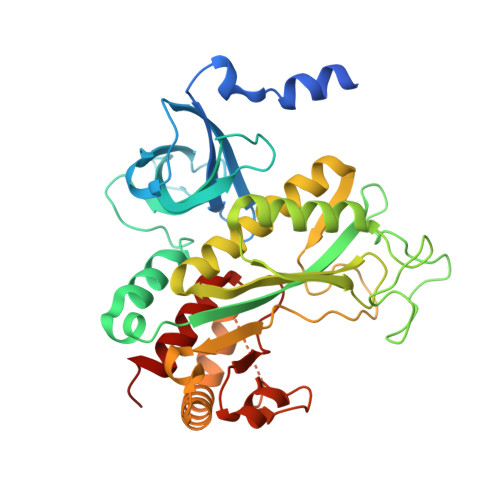The structures of cytosolic and plastid-located glutamine synthetases from Medicago truncatula reveal a common and dynamic architecture.
Torreira, E., Seabra, A.R., Marriott, H., Zhou, M., Llorca, O., Robinson, C.V., Carvalho, H.G., Fernandez-Tornero, C., Pereira, P.J.(2014) Acta Crystallogr D Biol Crystallogr 70: 981-993
- PubMed: 24699643
- DOI: https://doi.org/10.1107/S1399004713034718
- Primary Citation of Related Structures:
4IS4 - PubMed Abstract:
The first step of nitrogen assimilation in higher plants, the energy-driven incorporation of ammonia into glutamate, is catalyzed by glutamine synthetase. This central process yields the readily metabolizable glutamine, which in turn is at the basis of all subsequent biosynthesis of nitrogenous compounds. The essential role performed by glutamine synthetase makes it a prime target for herbicidal compounds, but also a suitable intervention point for the improvement of crop yields. Although the majority of crop plants are dicotyledonous, little is known about the structural organization of glutamine synthetase in these organisms and about the functional differences between the different isoforms. Here, the structural characterization of two glutamine synthetase isoforms from the model legume Medicago truncatula is reported: the crystallographic structure of cytoplasmic GSII-1a and an electron cryomicroscopy reconstruction of plastid-located GSII-2a. Together, these structural models unveil a decameric organization of dicotyledonous glutamine synthetase, with two pentameric rings weakly connected by inter-ring loops. Moreover, rearrangement of these dynamic loops changes the relative orientation of the rings, suggesting a zipper-like mechanism for their assembly into a decameric enzyme. Finally, the atomic structure of M. truncatula GSII-1a provides important insights into the structural determinants of herbicide resistance in this family of enzymes, opening new avenues for the development of herbicide-resistant plants.
- Chemical and Physical Biology, Centro de Investigaciones Biológicas - CSIC, Ramiro de Maeztu 9, 28040 Madrid, Spain.
Organizational Affiliation:
















